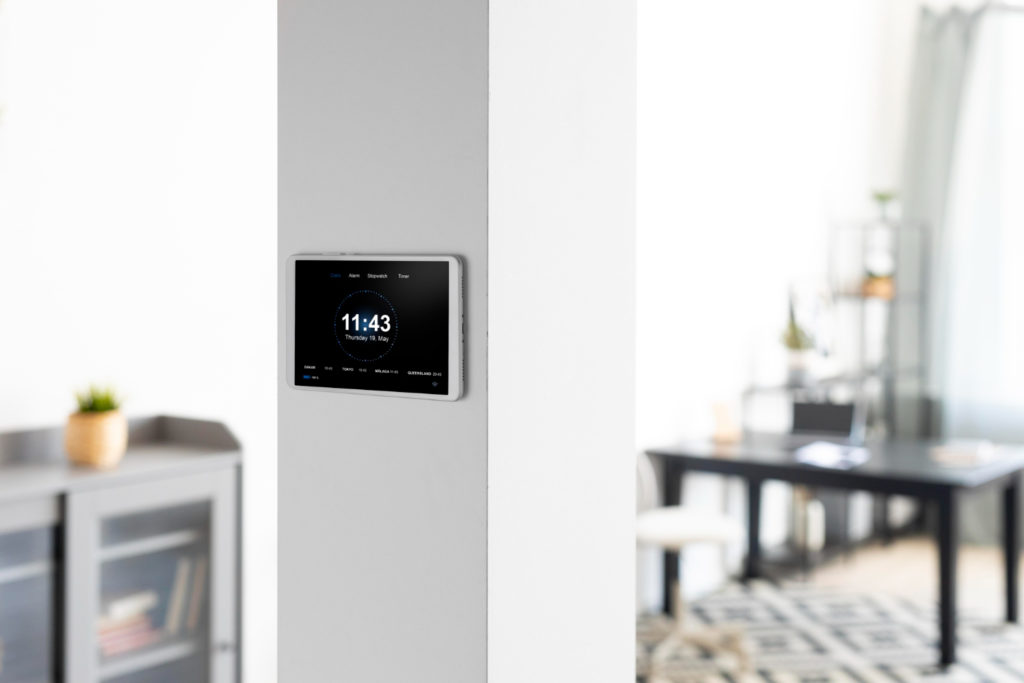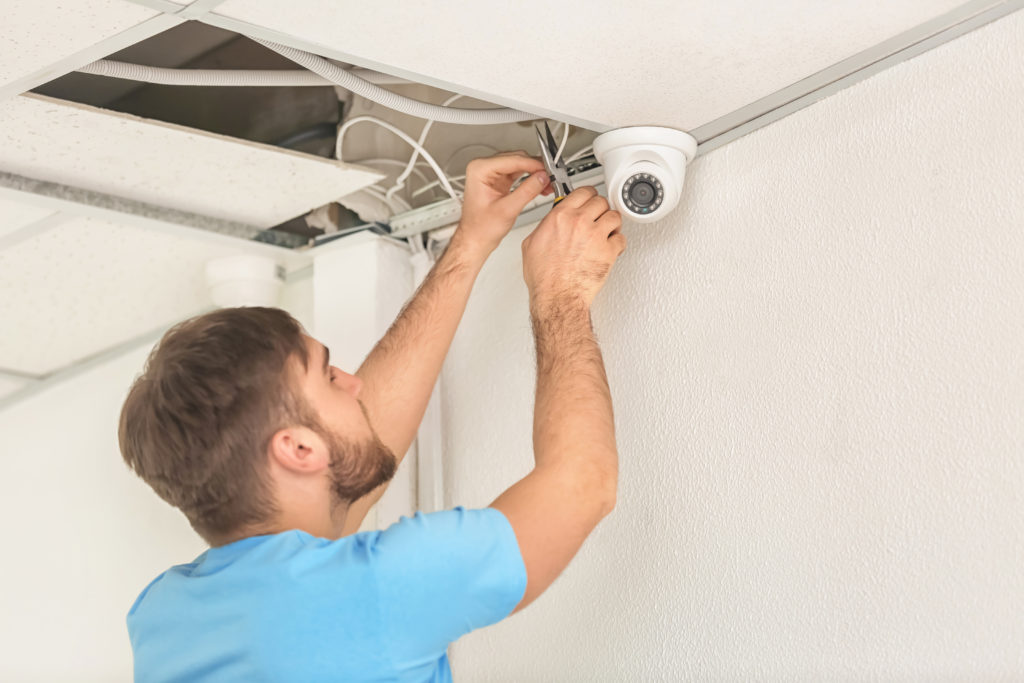
Blog
DIY Smart Home: How to Get Started
If you’re looking to get started with DIY smart home features, this guide will show you how. Discover who has the best smart home DIY kit and how to get started.
Smarterhome.org may earn a commission when you click on our affiliate links and this may impact the placement of listings. Learn more.

Home Security Systems are essential for giving you peace of mind and also protecting your home. Once they are in place, you can stay vigilant on who comes and goes, and rest assured knowing you have another line of defense. But before you get to enjoy the benefits of a home security system, you need to decide whether you’d like to install the system yourself or have a professional install it for you. Read on to weigh the pros and cons of each installation method, DIY vs professional installation.
The DIY option presents some compelling advantages, namely:
It’s cheaper. You could save a couple hundred dollars on the installation process alone if you opt to install your new home security system yourself.
It’s faster. It’s typically faster to DIY because the DIY Home Security Providers don’t need to coordinate with a technician. Often equipment will ship in 1-2 business days.
It’s portable. Once you purchase the home security equipment, you own it. It’s yours to keep and you can uninstall it and take it with you if you move.
It’s good for homes that are single-level, and don’t have too much foot traffic. There’s not that many people around and there’s only a handful of ways people could enter your home, no need to overthink it.
There are sometimes unforeseen challenges during setup. While companies claim their systems are easy to setup, there sometimes are extenuating circumstances that cause your installation to become a headache. Maybe you have to a drill a hole in the wall all the way to the exterior of the home in order to get power to your mounted camera. Maybe you live in a wooded area and your system has trouble connecting to their app.
Troubleshooting can be cumbersome. Since you opted to install it yourself, it is implied that you also will take the lead on troubleshooting an issue, should one arise. Sure they may point you to some documents or tutorials but those sometimes do not give you the customized solution you need for your home.
It’s usually guaranteed to work the first time. These national brands have highly trained technicians who have systems and processes to ensure they install your new home security system correctly, and efficiently.
Troubleshooting is easy because they can do it for you. Experiencing an issue? They’ll either walk you through it or get someone out there to help immediately.
You have peace of mind knowing it’s installed correctly and can protect your home.
It’s convenient. You can go about your day and come back to a fully installed and protected home. No work, no hassle no anxiety that you installed it incorrectly.
It can take time to schedule a technician. Home security systems are in high demand right now and you have to wait in line. 2021 saw a surge in Home Security System sales across the country.
The equipment might not be yours to own. Check each company’s policy on whether you own the equipment after installation. Be sure to ask what happens if you move. Can you take the system with you?
It is slightly costlier to have it installed by a professional (as they require tools, electrical knowledge). Installation fees can run from $200 to $500 depending on the complexity of your home layout.
In conclusion, DIY systems are best for tech savvy consumers who have a straightforward simple house/apartment layout. Because their house layout situation is simple, they don’t need to overthink the installation process. Professionally installed systems are better suited towards homes with a lot of entry points, multiple levels and a lot of visitors or people nearby. There is no right answer, but the decision on what type of installation method shouldn’t stop you from getting a home security system.

Blog
Smarter Home was created to help you make an informed decision when choosing a home security system.
Powered by Soleo Communications, Inc. 2025. All rights reserved.
Requires 36-month monitoring contract starting at $38.99/mo. without QSP (24-month monitoring contract in California, total fees from $935.76) and minimum installation amount of $599 for professionally installed systems OR month-to-month monitoring contract for ADT Self Setup systems starting at $24.99 without QSP (one month minimum) and minimum purchase amount of $194.98. Professional monitoring required for ADT to notify emergency contacts or services on your behalf. Service and installation charges vary depending on system configuration, equipment and services selected. For reactivations of professionally installed systems, a $99 test and inspect fee applies . Upon early termination by Customer, ADT may charge 75% of the monthly service charges due for the balance of the initial contract term. Quality Service Plan (QSP) is ADT’s Extended Limited Warranty and is available for additional fee. Additional charges may apply in areas that require guard response service for municipal alarm verification. Professionally installed system remains property of ADT. Local permit fees may be required. Prices and offers subject to change and may vary by market. Additional taxes and fees may apply. Satisfactory credit required. A security deposit may be required. Simulated screen images and photos are for illustrative purposes only. For Self-Setup Systems, cancel by calling 888-392-2039 or by following the instructions in your order confirmation email. To avoid contract termination charges, cancellation must occur no later than 30 days after the contract date. Contract termination charges may be applied for cancellation after the initial 30-day period. Equipment must be fully removed and returned before a refund will be processed. Any shipping costs previously paid are non-refundable. Google and Nest Doorbell are trademarks of Google LLC. Some features, including mobile notifications, remote control, video streaming and video recording, require working internet and Wi-Fi. Minimum OS requirements are available at g.co/home/req. iOS is a trademark of Cisco and is used under license. Google Nest products and services featured are designed to make life easier and to build a helpful home and were not designed specifically for life-sustaining or safety-critical use cases. These products and services are compatible with the ADT Self Setup System, and depend upon working internet, Wi-Fi, and, in some cases, the service availability from ADT and/or Google. To learn more, please visit http://g.co/nest/TOS.
Money-back guarantee only applies after ADT has made attempts to resolve a system-related issue and has not been able to resolve that issue within the first six (6) months of your original activation. ADT Money-Back Guarantee is not transferable. Equipment must be returned before a refund will be processed. Conditions preventing normal system operation cannot be caused by the customer. For professionally installed systems only.
Customer may receive reimbursement of up to five hundred dollars ($500) of Customer’s homeowner’s insurance deductible (if any) if, and only if, ALL requirements for Theft Protection Guarantee are met to ADT’s reasonable satisfaction. Customer must request reimbursement within 60 days of property loss. Request must be mailed to ADT and include: Theft Protection Guarantee certificate signed by Customer, a letter from Customer requesting reimbursement, a copy of the police report, and a copy of the accepted insurance claim. ADT reserves the right to reject any application for reimbursement that does not comply with all of the requirements. For professionally installed systems only.